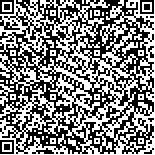| 摘要: |
| [摘要] 目的 调查黑龙江省城乡小学生的屈光状态,为该省小学生的眼卫生干预方案的制定提供参考。方法 采取随机整群抽样的方法,纳入城市小学生1 306人(2 612眼)作为城市组,另选择乡镇小学生286人(572眼)作为乡镇组,进行眼科检査,包括视力、眼部常规检査、电脑验光等,比较两组的视力水平、视力不良率和屈光状态。结果 随着年龄的增长,城市组和乡镇组的视力不良率均呈上升趋势,但乡镇组视力不良率变化幅度较小。城市组二年级、三年级、四年级、五年级小学生左、右眼视力不良率均显著高于乡镇组(P<0.05);而城市组一年级右眼视力不良率与乡镇组比较差异无统计学意义(P>0.05),但左眼视力不良率显著高于乡镇组(P<0.05)。两组左、右眼在屈光状态方面比较差异有统计学意义(P<0.05),乡镇组左、右眼的正视率均高于城市组,且近视情况更少。结论 城市和乡镇小学生的视力不良率均随年龄增长而上升,且城市小学生的视力不良风险较大。 |
| 关键词: 城市 乡镇 小学生 屈光状态 |
| DOI:10.3969/j.issn.1674-3806.2020.10.13 |
| 分类号:R 967 |
| 基金项目:黑龙江省卫健委科研课题(编号:2017-488) |
|
| A sampling survey on the refractive status of primary school students in urban and rural areas of Heilongjiang Province |
|
SONG Han, CHEN Xi-hui, ZHU Rui-xi
|
|
Department of Ophthalmology, Heilongjiang Provincial Hospital Affiliated to Harbin Institute of Technology, Heilongjiang 150036, China
|
| Abstract: |
| [Abstract] Objective To survey the refractive status of primary school students in urban and rural areas of Heilongjiang Province, and to provide reference for the development of eye health intervention program for the primary school students in the province. Methods A random cluster sampling method was adopted to include 1 306 urban primary school students(2 612 eyes) as the urban group, and 286 primary school students(572 eyes) in villages and towns as the township group. All the study subjects underwent an ophthalmic examination, including visual acuity, routine ocular examination, and optometry. The visual acuity, poor eyesight rate and refractive status were compared between the two groups. Results With the increase of age, the poor eyesight rates in the urban group and the township group showed an increasing trend, but the change range of the poor eyesight rate in the township group was smaller. The poor eyesight rates of the left and right eyes in the urban groups of grade 2, grade 3, grade 4 and grade 5 primary school students were significantly higher than those in the township groups of grade 2, grade 3, grade 4 and grade 5 primary school students(P<0.05). There was no significant difference in the poor eyesight rate of the right eye between the urban group of grade 1 and the township group of grade 1(P>0.05), but the poor eyesight rate of the left eye in the urban group of grade 1 was significantly higher than that in the township group of grade 1(P<0.05). There was statistically significant difference between the two groups in the refractive status of the left and right eyes(P<0.05). The emmetropia rates of the left and right eyes in the township group were higher than those in the urban group, and myopia was less in the township group. Conclusion The poor eyesight rates of city and township primary school students increase with age, and the risk of poor eyesight of city primary school students is higher. |
| Key words: City Villages and towns Primary school students Refractive status |

